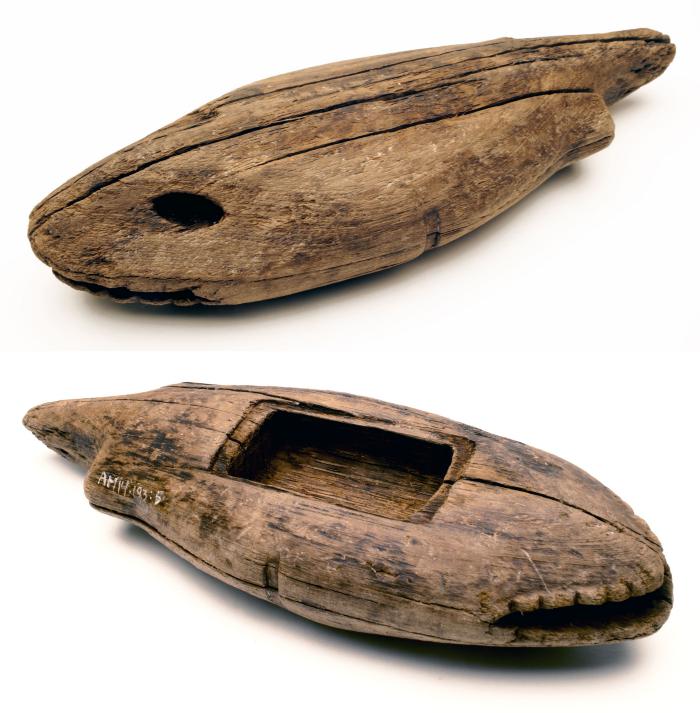Talisman — Nakernaq
Carliarluki nakernaten. Nakciquten. – Take care of your talisman. You will be lucky.

Photo: Wooden box carved in the shape of a fish, perhaps to hold talismans. Karluk One Site, ca. 400 years old, Koniag, Inc. Collection. AM193.
A rabbit's foot, a four-leaf clover, a horseshoe–these are all widely recognized symbols of luck in modern American life. They are talismans, objects believed to provide good fortune or personal protection. People in all cultures use talismans, often carrying or wearing amulets, or displaying them in their homes.
Talismans have long been essential to the personal spirituality of Alutiiq people. Children once wore pouches with special charms to provide comfort and security. Hunters carried amulets to draw animals near, and shaman called for spiritual assistance with talismans. Historic accounts suggest that small, rare objects functioned as talismans. These items showed themselves to individuals. A person who encountered a talisman added it to his or her collection and was considered very lucky. The Alutiiq word from talisman comes from the root naker- – to be fortunate.
Talismans included exotic plant materials like chestnuts and beans carried to Kodiak's shores on coastal currents. People also collected eagle feathers, bear hair, stones, and roots. Charms stored inside a historic shaman's rattle from the Alaska Peninsula include clippings of red and black hair, a piece of mica, a quartz crystal, and a sliver of wood.
Alutiiq Elders recall that red, tan, and black stones functioned as nakernat. Some of these stones glowed with spiritual power. Others were alive. These stones required feeding and could reproduce. Elder John Pestrikoff remembered that black stones were especially powerful. Some were smooth and shaped like a clamshell. Others were wrinkled and had tiny, sharp teeth.
Caring for one's talisman was important. Hunters kept their charms in small boxes they could carry their kayaks or store safely away from family members. John Pestrikoff's father carried his amulets in a small, metal cigar box, tied closed with string. An older wooden box, from an ancient village in Karluk, may also have been for holding talismans. Shaped like a fish, this container has a small rectangular hole in its base with a carefully recessed lip for securing a cover.
